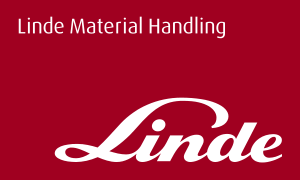Flexible Automation for Intralogistics
AUTOMATION
Flexible Automation for Intralogistics
AUTOMATION

NAVIGATION IN NARROW AISLES
Automated navigation in narrow aisle warehouses
Tight pathways, high lifting heights, storage facilities that are difficult to see – narrow aisle storage is cost-effective for companies, but at the same time poses great challenges for the trucks that work there, and their operators. Linde’s Narrow Aisle Navigation significantly improves both productivity and safety, while also reducing the incidence of damage to goods and warehouse facilities. The system is controlled by the customer’s own Warehouse Management System (WMS).
How does this technology work?
All the necessary structural measures for this technology can be implemented quickly: At regular intervals in narrow aisles, either RFID tags are fixed to the floor or barcodes are mounted on the shelves. While driving past, the scanning equipment on the truck reads the dataset on the RFID tag or barcode, thereby allowing the control system to determine the truck’s position in the aisles.
The central system sends target coordinates for the drop-off or picking-up point to the receiver in the truck via a WiFi network. On the way to its destination, the truck then continually checks its current position against its specifications, and determines the best combination of traction and lift movement in order to reach its desired position.

ADVANTAGES OF NARROW AISLE NAVIGATION

EFFICIENCY
The truck goes where it has been instructed to via the quickest possible route with the least possible expenditure of energy. The result is time saving of up to 25 percent, and a significant increase in throughput.

PRECISION
The system assists the driver, and via a display shows them the exact pallet location for a particular product. The driver only has to activate the driving function. This rules out the possibility of a pallet being stored in the wrong place.

SAFETY
The aisle safety assistant, installed as standard with the narrow aisle navigation technology, recognizes marked bumps in the floor as well as obstacles on the shelves, on the floor, or on the ceiling, and limits certain driving functions – such as speed, lifting height and fork extension – in those areas.



